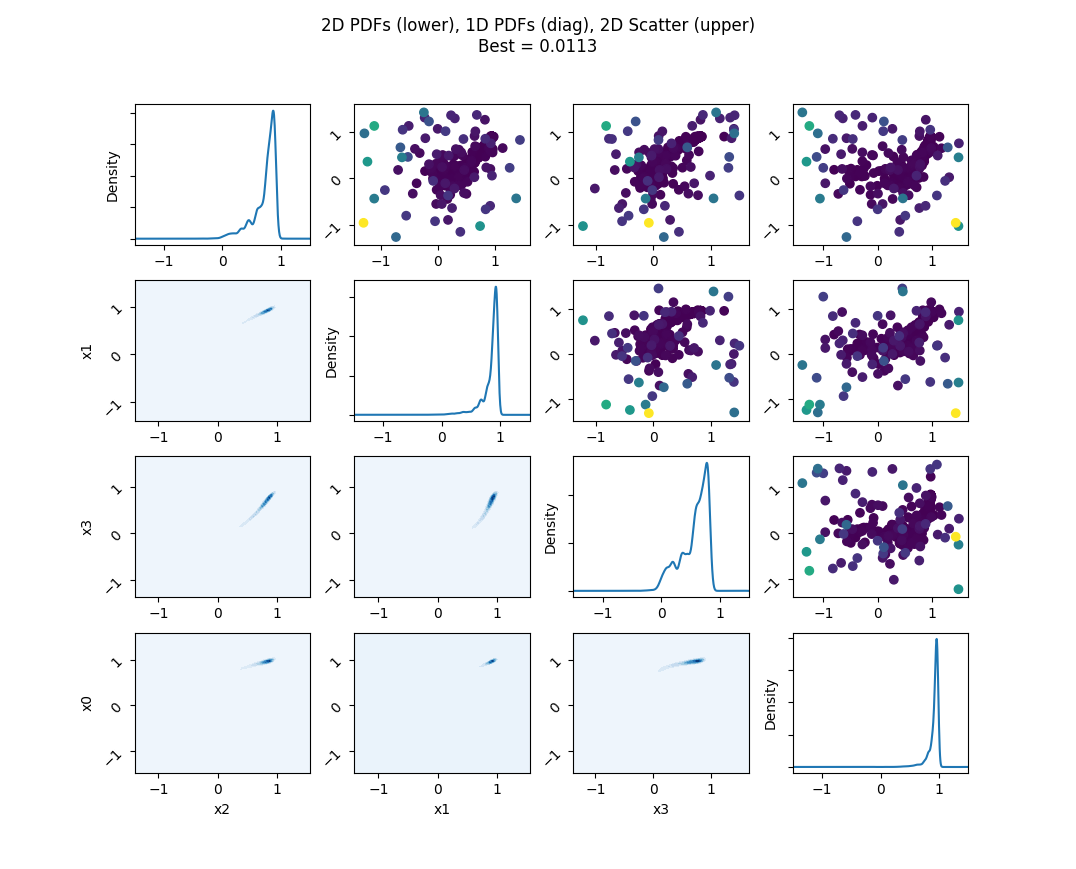Python 3 implementation of "neighborhood algorithm" direct-search optimization and Bayesian ensemble appraisal. In short, a nearest-neighbor interpolant based on Voronoi polygons is used to interpolate the misfit (search) and posterior probability (appraisal) to allow efficient sampling and integration for high-dimensional problems. Details on theory and implementation are supplied in the references.
To generate the example figure above, you can run the internal demo, like so:
import neighborhood as nbr
nbr.demo_search(ndim=4, nsamp=10, nresamp=5, niter=500)Equivalently, you can do the following:
import neighborhood as nbr
num_dim = 4
srch = nbr.Searcher(
objective=nbr.rosenbrock,
limits=[(-1.5, 1.5) for _ in range(num_dim)],
num_samp=10,
num_resamp=5,
maximize=False,
verbose=True
)
srch.update(500)
srch.plot()Optimization is implemented, ensemble appraisal is in progress.
This project uses pytest for unit
testing. The aim is not to be exhuastive, but to provide reasonable assurances
that everything works as advertised. To run, simply call pytest --verbose from
somewhere in this package.
Release versions are tagged in the repository, built as distributions, and uploaded to PyPI. The minimal commands to do this are:
# update PyPI-readable README
pandoc --from=markdown --to=rst --output=README.rst README.md
# build with setuptools
python3 setup.py sdist bdist_wheel
# upload to PyPI test server (then check it out)
twine upload --repository-url https://test.pypi.org/legacy/ dist/*
# upload to PyPI
twine upload dist/*
# tag release in git repo
git tag -a X.X.X -m "vX.X.X"
git push origin --tagsFor now, it is necessary to manually "clean up" README.rst. In the future, it looks like PyPI will render the markdown directly.
-
Sambridge, M. (1999). Geophysical inversion with a neighbourhood algorithm - I. Searching a parameter space. Geophysical Journal International, 138(2), 479–494. http://doi.org/10.1046/j.1365-246X.1999.00876.x
-
Sambridge, M. (1999). Geophysical inversion with a neighborhood algorithm - II. Appraising the ensemble. Geophys, J. Int., 138, 727–746. http://doi.org/10.1046/j.1365-246x.1999.00900.x
